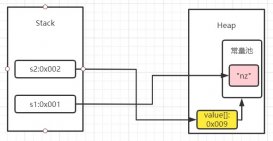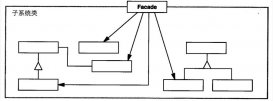Pre
本篇博文我们开始梳理下Spring 提供的测试解决方案。
对于 Web 应用程序而言, 一个应用程序中涉及数据层、服务层、Web 层,以及各种外部服务之间的交互关系时,我们除了对各层组件的单元测试之外,还需要充分引入集成测试保证服务的正确性和稳定性。
Spring Boot 中的测试解决方案
和 Spring Boot 1.x 版本一样,Spring Boot 2.x 也提供了一个用于测试的 spring-boot-starter-test 组件。
在 Spring Boot 中,集成该组件的方法是在 pom 文件中添加如下所示依赖:
|
1
2
3
4
5
6
7
8
9
10
11
|
<dependency> <groupId>org.springframework.boot</groupId> <artifactId>spring-boot-starter-test</artifactId> <scope>test</scope></dependency> <dependency> <groupId>org.junit.platform</groupId> <artifactId>junit-platform-launcher</artifactId> <scope>test</scope></dependency> |
其中,最后一个依赖用于导入与 JUnit 相关的功能组件。
然后,通过 Maven 查看 spring-boot-starter-test 组件的依赖关系,我们可以得到如下所示的组件依赖图:

从上图中可以看到,在代码工程的构建路径中,我们引入了一系列组件初始化测试环境。比如 JUnit、JSON Path、AssertJ、Mockito、Hamcrest 等
-
JUnit:JUnit 是一款非常流行的基于 Java 语言的单元测试框架 -
JSON Path:类似于 XPath 在 XML 文档中的定位,JSON Path 表达式通常用来检索路径或设置 JSON 文件中的数据。 -
AssertJ:AssertJ 是一款强大的流式断言工具,它需要遵守 3A 核心原则,即 Arrange(初始化测试对象或准备测试数据)——> Actor(调用被测方法)——>Assert(执行断言)。 -
Mockito:Mockito 是 Java 世界中一款流行的 Mock 测试框架,它主要使用简洁的 API 实现模拟操作。在实施集成测试时,我们将大量使用到这个框架。 -
Hamcrest:Hamcrest 提供了一套匹配器(Matcher),其中每个匹配器的设计用于执行特定的比较操作。 -
JSONassert:JSONassert 是一款专门针对 JSON 提供的断言框架。 -
Spring Test & Spring Boot Test:为 Spring 和 Spring Boot 框架提供的测试工具。
以上组件的依赖关系都是自动导入, 无须做任何变动。
测试 Spring Boot 应用程序
接下来,我们将初始化 Spring Boot 应用程序的测试环境,并介绍如何在单个服务内部完成单元测试的方法和技巧。
导入 spring-boot-starter-test 依赖后,我们就可以使用它提供的各项功能应对复杂的测试场景了。
初始化测试环境
对于 Spring Boot 应用程序而言,我们知道其 Bootstrap 类中的 main() 入口将通过 SpringApplication.run() 方法启动 Spring 容器.
|
1
2
3
4
5
6
7
8
|
import org.springframework.boot.SpringApplication;import org.springframework.boot.autoconfigure.SpringBootApplication;@SpringBootApplicationpublic class Application { public static void main(String[] args) { SpringApplication.run(Application.class, args); }} |
针对上述 Bootstrap 类,我们可以通过编写测试用例的方式,验证 Spring 容器能否正常启动。

基于 Maven 的默认风格,我们将在 src/test/java 和 src/test/resources 包下添加各种测试用例代码和配置文件。
|
1
2
3
4
5
6
7
8
9
10
11
12
13
14
15
16
17
18
19
20
|
import org.junit.Assert;import org.junit.Test;import org.junit.runner.RunWith;import org.springframework.beans.factory.annotation.Autowired;import org.springframework.boot.test.context.SpringBootTest;import org.springframework.context.ApplicationContext;import org.springframework.test.context.junit4.SpringRunner; @SpringBootTest@RunWith(SpringRunner.class)public class ApplicationContextTests { @Autowired private ApplicationContext applicationContext; @Test public void testContextLoads() throws Throwable { Assert.assertNotNull(this.applicationContext); }} |
该用例对 Spring 中的 ApplicationContext 作了简单非空验证。
执行该测试用例后,从输出的控制台信息中,我们可以看到 Spring Boot 应用程序被正常启动,同时测试用例本身也会给出执行成功的提示。
上述测试用例虽然简单,但是已经包含了测试 Spring Boot 应用程序的基本代码框架。其中,最重要的是 ApplicationContextTests 类上的 @SpringBootTest 和 @RunWith 注解,对于 Spring Boot 应用程序而言,这两个注解构成了一套完成的测试方案。
接下来我们对这两个注解进行详细展开。
@SpringBootTest
因为 SpringBoot 程序的入口是 Bootstrap 类,所以 SpringBoot 专门提供了一个 @SpringBootTest 注解测试 Bootstrap 类。同时 @SpringBootTest 注解也可以引用 Bootstrap 类的配置,因为所有配置都会通过 Bootstrap 类去加载。
在上面的例子中,我们是通过直接使用 @SpringBootTest 注解提供的默认功能对作为 Bootstrap 类的 Application 类进行测试。
而更常见的做法是在 @SpringBootTest 注解中指定该 Bootstrap 类,并设置测试的 Web 环境,如下代码所示。
|
1
2
|
@SpringBootTest(classes = CustomerApplication.class, webEnvironment = SpringBootTest.WebEnvironment.MOCK) |
在以上代码中,@SpringBootTest 注解中的 webEnvironment 可以有四个选项,分别是 MOCK、RANDOM_PORT、DEFINED_PORT 和 NONE。
@SpringBootTest - webEnvironment
-
MOCK:加载 WebApplicationContext 并提供一个 Mock 的 Servlet 环境,此时内置的 Servlet 容器并没有正式启动。 -
RANDOM_PORT:加载 EmbeddedWebApplicationContext 并提供一个真实的 Servlet 环境,然后使用一个随机端口启动内置容器。 -
DEFINED_PORT:这个配置也是通过加载 EmbeddedWebApplicationContext 提供一个真实的 Servlet 环境,但使用的是默认端口,如果没有配置端口就使用 8080。 -
NONE:加载 ApplicationContext 但并不提供任何真实的 Servlet 环境。
在 Spring Boot 中,@SpringBootTest 注解主要用于测试基于自动配置的 ApplicationContext,它允许我们设置测试上下文中的 Servlet 环境。
在多数场景下,一个真实的 Servlet 环境对于测试而言过于重量级,通过 MOCK 环境则可以缓解这种环境约束所带来的困扰
@RunWith 注解与 SpringRunner
在上面的示例中,我们还看到一个由 JUnit 框架提供的 @RunWith 注解,它用于设置测试运行器。例如,我们可以通过 @RunWith(SpringJUnit4ClassRunner.class) 让测试运行于 Spring 测试环境。
虽然这我们指定的是 SpringRunner.class,实际上,SpringRunner 就是 SpringJUnit4ClassRunner 的简化,它允许 JUnit 和 Spring TestContext 整合运行,而 Spring TestContext 则提供了用于测试 Spring 应用程序的各项通用的支持功能。
执行测试用例
接下来我们将通过代码示例回顾如何使用 JUnit 框架执行单元测试的过程和实践,同时提供验证异常和验证正确性的测试方法。
单元测试的应用场景是一个独立的类,如下所示的 CustomerTicket 类就是一个非常典型的独立类:
|
1
2
3
4
5
6
7
8
9
10
11
12
13
14
15
16
|
public class CustomTicket { private Long id; private Long accountId; private String orderNumber; private String description; private Date createTime; public CustomTicket (Long accountId, String orderNumber) { super(); Assert.notNull(accountId, "Account Id must not be null"); Assert.notNull(orderNumber, "Order Number must not be null"); Assert.isTrue(orderNumber.length() == 10, "Order Number must be exactly 10 characters"); this.accountId = accountId; this.orderNumber = orderNumber; } …} |
我们可以看到,该类对CustomTicket 做了封装,并在其构造函数中添加了校验机制。
下面我们先来看看如何对正常场景进行测试。
例如 ArtisanTicket 中orderNumber 的长度问题,我们可以使用如下测试用例,通过在构造函数中传入字符串来验证规则的正确性:
|
1
2
3
4
5
6
7
8
9
|
@RunWith(SpringRunner.class)public class CustomerTicketTests { private static final String ORDER_NUMBER = "Order00001"; @Test public void testOrderNumberIsExactly10Chars() throws Exception { CustomerTicket customerTicket = new CustomerTicket(100L, ORDER_NUMBER); assertThat(customerTicket.getOrderNumber().toString()).isEqualTo(ORDER_NUMBER); }} |
使用 @DataJpaTest 注解测试数据访问组件
数据需要持久化,接下来我们将从数据持久化的角度出发,讨论如何对 Repository 层进行测试的方法。
首先,我们讨论一下使用关系型数据库的场景,并引入针对 JPA 数据访问技术的 @DataJpaTest 注解。
@DataJpaTest 注解会自动注入各种 Repository 类,并初始化一个内存数据库和及访问该数据库的数据源。在测试场景下,一般我们可以使用 H2 作为内存数据库,并通过 MySQL 实现数据持久化,因此我们需要引入以下所示的 Maven 依赖:
|
1
2
3
4
5
6
7
8
9
|
<dependency> <groupId>com.h2database</groupId> <artifactId>h2</artifactId></dependency><dependency> <groupId>mysql</groupId> <artifactId>mysql-connector-java</artifactId> <scope>runtime</scope></dependency> |
另一方面,我们需要准备数据库 DDL 用于初始化数据库表,并提供 DML 脚本完成数据初始化。其中,schema-mysql.sql 和 data-h2.sql 脚本分别充当了 DDL 和 DML 的作用。
在 customer-service 的 schema-mysql.sql 中包含了 CUSTOMER 表的创建语句,如下代码所示:
|
1
2
3
4
5
6
7
8
9
|
DROP TABLE IF EXISTS `customerticket`;create table `customerticket` ( `id` bigint(20) NOT NULL AUTO_INCREMENT, `account_id` bigint(20) not null, `order_number` varchar(50) not null, `description` varchar(100) not null, `create_time` timestamp not null DEFAULT CURRENT_TIMESTAMP, PRIMARY KEY (`id`)); |
而在 data-h2.sql 中,我们插入了一条测试需要使用的数据,具体的初始化数据过程如下代码所示:
|
1
|
INSERT INTO customerticket (`account_id`, `order_number`,`description`) values (1, 'Order00001', ' DemoCustomerTicket1'); |
接下来是提供具体的 Repository 接口,我们先通过如下所示代码回顾一下 CustomerRepository 接口的定义。
|
1
2
3
|
public interface CustomerTicketRepository extends JpaRepository<CustomerTicket, Long> { List<CustomerTicket> getCustomerTicketByOrderNumber(String orderNumber);} |
这里存在一个方法名衍生查询 getCustomerTicketByOrderNumber,它会根据 OrderNumber 获取 CustomerTicket。
基于上述 CustomerRepository,我们可以编写如下所示的测试用例:
|
1
2
3
4
5
6
7
8
9
10
11
12
13
14
15
16
17
18
19
20
21
22
23
24
25
26
27
28
29
30
31
32
33
34
35
36
37
38
39
40
|
@RunWith(SpringRunner.class)@DataJpaTestpublic class CustomerRepositoryTest { @Autowired private TestEntityManager entityManager; @Autowired private CustomerTicketRepository customerTicketRepository; @Test public void testFindCustomerTicketById() throws Exception { this.entityManager.persist(new CustomerTicket(1L, "Order00001", "DemoCustomerTicket1", new Date())); CustomerTicket customerTicket = this.customerTicketRepository.getOne(1L); assertThat(customerTicket).isNotNull(); assertThat(customerTicket.getId()).isEqualTo(1L); } @Test public void testFindCustomerTicketByOrderNumber() throws Exception { String orderNumber = "Order00001"; this.entityManager.persist(new CustomerTicket(1L, orderNumber, "DemoCustomerTicket1", new Date())); this.entityManager.persist(new CustomerTicket(2L, orderNumber, "DemoCustomerTicket2", new Date())); List<CustomerTicket> customerTickets = this.customerTicketRepository.getCustomerTicketByOrderNumber(orderNumber); assertThat(customerTickets).size().isEqualTo(2); CustomerTicket actual = customerTickets.get(0); assertThat(actual.getOrderNumber()).isEqualTo(orderNumber); } @Test public void testFindCustomerTicketByNonExistedOrderNumber() throws Exception { this.entityManager.persist(new CustomerTicket(1L, "Order00001", "DemoCustomerTicket1", new Date())); this.entityManager.persist(new CustomerTicket(2L, "Order00002", "DemoCustomerTicket2", new Date())); List<CustomerTicket> customerTickets = this.customerTicketRepository.getCustomerTicketByOrderNumber("Order00003"); assertThat(customerTickets).size().isEqualTo(0); }} |
这里可以看到,我们使用了 @DataJpaTest 实现 CustomerRepository 的注入。同时,我们还注意到另一个核心测试组件 TestEntityManager,它的效果相当于不使用真正的 CustomerRepository 完成数据的持久化,从而提供了一种数据与环境之间的隔离机制。
执行这些测试用例后,我们需要关注它们的控制台日志输入,其中核心日志如下所示(为了显示做了简化处理):
|
1
2
3
4
5
6
7
8
9
10
11
12
13
14
|
Hibernate: drop table customer_ticket if existsHibernate: drop sequence if exists hibernate_sequenceHibernate: create sequence hibernate_sequence start with 1 increment by 1Hibernate: create table customer_ticket (id bigint not null, account_id bigint, create_time timestamp, description varchar(255), order_number varchar(255), primary key (id))Hibernate: create table localaccount (id bigint not null, account_code varchar(255), account_name varchar(255), primary key (id))…Hibernate: call next value for hibernate_sequenceHibernate: call next value for hibernate_sequenceHibernate: insert into customer_ticket (account_id, create_time, description, order_number, id) values (?, ?, ?, ?, ?)Hibernate: insert into customer_ticket (account_id, create_time, description, order_number, id) values (?, ?, ?, ?, ?)Hibernate: select customerti0_.id as id1_0_, customerti0_.account_id as account_2_0_, customerti0_.create_time as create_t3_0_, customerti0_.description as descript4_0_, customerti0_.order_number as order_nu5_0_ from customer_ticket customerti0_ where customerti0_.order_number=?…Hibernate: drop table customer_ticket if existsHibernate: drop sequence if exists hibernate_sequence |
从以上日志中,我们不难看出执行各种 SQL 语句的效果。
Service层和Controller的测试
与位于底层的数据访问层不同,这两层的组件都依赖于它的下一层组件,即 Service 层依赖于数据访问层,而 Controller 层依赖于 Service 层。因此,对这两层进行测试时,我们将使用不同的方案和技术。
使用 Environment 测试配置信息
在 Spring Boot 应用程序中,Service 层通常依赖于配置文件,所以我们也需要对配置信息进行测试。
配置信息的测试方案分为两种,第一种依赖于物理配置文件,第二种则是在测试时动态注入配置信息。
第一种测试方案比较简单,在 src/test/resources 目录下添加配置文件时,Spring Boot 能读取这些配置文件中的配置项并应用于测试案例中。
在介绍具体的实现过程之前,我们有必要先来了解一下 Environment 接口,该接口定义如下:
|
1
2
3
4
5
|
public interface Environment extends PropertyResolver { String[] getActiveProfiles(); String[] getDefaultProfiles(); boolean acceptsProfiles(String... profiles);} |
在上述代码中我们可以看到,Environment 接口的主要作用是处理 Profile,而它的父接口 PropertyResolver 定义如下代码所示:
|
1
2
3
4
5
6
7
8
9
10
11
|
public interface PropertyResolver { boolean containsProperty(String key); String getProperty(String key); String getProperty(String key, String defaultValue); <T> T getProperty(String key, Class<T> targetType); <T> T getProperty(String key, Class<T> targetType, T defaultValue); String getRequiredProperty(String key) throws IllegalStateException; <T> T getRequiredProperty(String key, Class<T> targetType) throws IllegalStateException; String resolvePlaceholders(String text); String resolveRequiredPlaceholders(String text) throws IllegalArgumentException;} |
显然,PropertyResolver 的作用是根据各种配置项的 Key 获取配置属性值。
现在,假设 src/test/resources 目录中的 application.properties 存在如下配置项:
|
1
|
springcss.order.point = 10 |
那么,我们就可以设计如下所示的测试用例了。
|
1
2
3
4
5
6
7
8
9
10
|
@RunWith(SpringRunner.class)@SpringBootTestpublic class EnvironmentTests{ @Autowired public Environment environment; @Test public void testEnvValue(){ Assert.assertEquals(10, Integer.parseInt(environment.getProperty("springcss.order.point"))); }} |
这里我们注入了一个 Environment 接口,并调用了它的 getProperty 方法来获取测试环境中的配置信息。
除了在配置文件中设置属性,我们也可以使用 @SpringBootTest 注解指定用于测试的属性值,示例代码如下:
|
1
2
3
4
5
6
7
8
9
10
|
@RunWith(SpringRunner.class)@SpringBootTest(properties = {" springcss.order.point = 10"})public class EnvironmentTests{ @Autowired public Environment environment; @Test public void testEnvValue(){ Assert.assertEquals(10, Integer.parseInt(environment.getProperty("springcss.order.point"))); }} |
使用 Mock 测试 Service 层
Service 层依赖于数据访问层。因此,对 Service 层进行测试时,我们还需要引入新的技术体系,也就是应用非常广泛的 Mock 机制。
接下来,我们先看一下 Mock 机制的基本概念。
Mock 机制
Mock 的意思是模拟,它可以用来对系统、组件或类进行隔离。
在测试过程中,我们通常关注测试对象本身的功能和行为,而对测试对象涉及的一些依赖,仅仅关注它们与测试对象之间的交互(比如是否调用、何时调用、调用的参数、调用的次数和顺序,以及返回的结果或发生的异常等),并不关注这些被依赖对象如何执行这次调用的具体细节。
因此,Mock 机制就是使用 Mock 对象替代真实的依赖对象,并模拟真实场景来开展测试工作。
使用 Mock 对象完成依赖关系测试的示意图如下所示:

可以看出,在形式上,Mock 是在测试代码中直接 Mock 类和定义 Mock 方法的行为,通常测试代码和 Mock 代码放一起。因此,测试代码的逻辑从测试用例的代码上能很容易地体现出来。
下面我们一起看一下如何使用 Mock 测试 Service 层。
使用 Mock
@SpringBootTest 注解中的 SpringBootTest.WebEnvironment.MOCK 选项,该选项用于加载 WebApplicationContext 并提供一个 Mock 的 Servlet 环境,内置的 Servlet 容器并没有真实启动。接下来,我们针对 Service 层演示一下这种测试方式。
首先,我们来看一种简单场景,在 customer-service 中存在如下 CustomerTicketService 类:
|
1
2
3
4
5
6
7
8
9
|
@Servicepublic class CustomerTicketService { @Autowired private CustomerTicketRepository customerTicketRepository; public CustomerTicket getCustomerTicketById(Long id) { return customerTicketRepository.getOne(id); } …} |
这里我们可以看到,以上方法只是简单地通过 CustomerTicketRepository 完成了数据查询操作。
显然,对以上 CustomerTicketService 进行集成测试时,还需要我们提供一个 CustomerTicketRepository 依赖。
下面,我们通过以下代码演示一下如何使用 Mock 机制完成对 CustomerTicketRepository 的隔离。
|
1
2
3
4
5
6
7
8
9
10
11
12
13
14
|
@RunWith(SpringRunner.class)@SpringBootTest(webEnvironment = SpringBootTest.WebEnvironment.MOCK)public class CustomerServiceTests { @MockBean private CustomerTicketRepository customerTicketRepository; @Test public void testGetCustomerTicketById() throws Exception { Long id = 1L; Mockito.when(customerTicketRepository.getOne(id)).thenReturn(new CustomerTicket(1L, 1L, "Order00001", "DemoCustomerTicket1", new Date())); CustomerTicket actual = customerTicketService.getCustomerTicketById(id); assertThat(actual).isNotNull(); assertThat(actual.getOrderNumber()).isEqualTo("Order00001"); }} |
首先,我们通过 @MockBean 注解注入了 CustomerTicketRepository;然后,基于第三方 Mock 框架 Mockito 提供的 when/thenReturn 机制完成了对 CustomerTicketRepository 中 getCustomerTicketById() 方法的 Mock。
当然,如果你希望在测试用例中直接注入真实的CustomerTicketRepository,这时就可以使用@SpringBootTest 注解中的 SpringBootTest.WebEnvironment.RANDOM_PORT 选项,示例代码如下:
|
1
2
3
4
5
6
7
8
9
10
11
12
13
|
@RunWith(SpringRunner.class)@SpringBootTest(webEnvironment = SpringBootTest.WebEnvironment.RANDOM_PORT)public class CustomerServiceTests { @Autowired private CustomerTicketRepository customerTicketRepository; @Test public void testGetCustomerTicketById() throws Exception { Long id = 1L; CustomerTicket actual = customerTicketService.getCustomerTicketById(id); assertThat(actual).isNotNull(); assertThat(actual.getOrderNumber()).isEqualTo("Order00001"); }} |
运行上述代码后就会以一个随机的端口启动整个 Spring Boot 工程,并从数据库中真实获取目标数据进行验证。
以上集成测试的示例中只包含了对 Repository 层的依赖,而有时候一个 Service 中可能同时包含 Repository 和其他 Service 类或组件,下面回到如下所示的 CustomerTicketService 类:
|
1
2
3
4
5
6
7
8
9
|
@Servicepublic class CustomerTicketService { @Autowired private OrderClient orderClient; private OrderMapper getRemoteOrderByOrderNumber(String orderNumber) { return orderClient.getOrderByOrderNumber(orderNumber); } …} |
这里我们可以看到,在该代码中,除了依赖 CustomerTicketRepository 之外,还同时依赖了 OrderClient。
请注意:以上代码中的 OrderClient 是在 customer-service 中通过 RestTemplate 访问 order-service 的远程实现类,其代码如下所示:
|
1
2
3
4
5
6
7
8
9
10
11
12
|
@Componentpublic class OrderClient { @Autowired RestTemplate restTemplate; public OrderMapper getOrderByOrderNumber(String orderNumber) { ResponseEntity<OrderMapper> restExchange = restTemplate.exchange( "http://localhost:8083/orders/{orderNumber}", HttpMethod.GET, null, OrderMapper.class, orderNumber); OrderMapper result = restExchange.getBody(); return result; }} |
CustomerTicketService 类实际上并不关注 OrderClient 中如何实现远程访问的具体过程。因为对于集成测试而言,它只关注方法调用返回的结果,所以我们将同样采用 Mock 机制完成对 OrderClient 的隔离。
对 CustomerTicketService 这部分功能的测试用例代码如下所示,可以看到,我们采用的是同样的测试方式。
|
1
2
3
4
5
6
7
8
9
10
11
12
|
@Testpublic void testGenerateCustomerTicket() throws Exception { Long accountId = 100L; String orderNumber = "Order00001"; Mockito.when(this.orderClient.getOrderByOrderNumber("Order00001")) .thenReturn(new OrderMapper(1L, orderNumber, "deliveryAddress")); Mockito.when(this.localAccountRepository.getOne(accountId)) .thenReturn(new LocalAccount(100L, "accountCode", "accountName")); CustomerTicket actual = customerTicketService.generateCustomerTicket(accountId, orderNumber); assertThat(actual.getOrderNumber()).isEqualTo(orderNumber);} |
这里提供的测试用例演示了 Service 层中进行集成测试的各种手段,它们已经能够满足一般场景的需要。
测试 Controller 层
对 Controller 层进行测试之前,我们先来提供一个典型的 Controller 类,它来自 customer-service,如下代码所示:
|
1
2
3
4
5
6
7
8
9
10
11
12
|
@RestController@RequestMapping(value="customers")public class CustomerController { @Autowired private CustomerTicketService customerTicketService; @PostMapping(value = "/{accountId}/{orderNumber}") public CustomerTicket generateCustomerTicket( @PathVariable("accountId") Long accountId, @PathVariable("orderNumber") String orderNumber) { CustomerTicket customerTicket = customerTicketService.generateCustomerTicket(accountId, orderNumber); return customerTicket; }} |
关于上述 Controller 类的测试方法,相对来说比较丰富,比如有 TestRestTemplate、@WebMvcTest 注解和 MockMvc 这三种,下面我们逐一进行讲解。
使用 TestRestTemplate
Spring Boot 提供的 TestRestTemplate 与 RestTemplate 非常类似,只不过它专门用在测试环境中。
如果我们想在测试环境中使用 @SpringBootTest,则可以直接使用 TestRestTemplate 来测试远程访问过程,示例代码如下:
|
1
2
3
4
5
6
7
8
9
10
11
12
13
14
15
16
17
18
19
20
|
@RunWith(SpringRunner.class)@SpringBootTest(webEnvironment = SpringBootTest.WebEnvironment.RANDOM_PORT)public class CustomerController2Tests { @Autowired private TestRestTemplate testRestTemplate; @MockBean private CustomerTicketService customerTicketService; @Test public void testGenerateCustomerTicket() throws Exception { Long accountId = 100L; String orderNumber = "Order00001"; given(this.customerTicketService.generateCustomerTicket(accountId, orderNumber)) .willReturn(new CustomerTicket(1L, accountId, orderNumber, "DemoCustomerTicket1", new Date())); CustomerTicket actual = testRestTemplate.postForObject("/customers/" + accountId+ "/" + orderNumber, null, CustomerTicket.class); assertThat(actual.getOrderNumber()).isEqualTo(orderNumber); }} |
上述测试代码中,首先,我们注意到 @SpringBootTest 注解通过使用 SpringBootTest.WebEnvironment.RANDOM_PORT 指定了随机端口的 Web 运行环境。然后,我们基于 TestRestTemplate 发起了 HTTP 请求并验证了结果。
特别说明:这里使用 TestRestTemplate 发起请求的方式与 RestTemplate 完全一致
使用 @WebMvcTest 注解
接下来测试方法中,我们将引入一个新的注解 @WebMvcTest,该注解将初始化测试 Controller 所必需的 Spring MVC 基础设施,CustomerController 类的测试用例如下所示:
|
1
2
3
4
5
6
7
8
9
10
11
12
13
14
15
16
17
18
19
|
@RunWith(SpringRunner.class)@WebMvcTest(CustomerController.class)public class CustomerControllerTestsWithMockMvc { @Autowired private MockMvc mvc; @MockBean private CustomerTicketService customerTicketService; @Test public void testGenerateCustomerTicket() throws Exception { Long accountId = 100L; String orderNumber = "Order00001"; given(this.customerTicketService.generateCustomerTicket(accountId, orderNumber)) .willReturn(new CustomerTicket(1L, 100L, "Order00001", "DemoCustomerTicket1", new Date())); this.mvc.perform(post("/customers/" + accountId+ "/" + orderNumber).accept(MediaType.APPLICATION_JSON)).andExpect(status().isOk()); }} |
MockMvc 类提供的基础方法分为以下 6 种,下面一一对应来看下。
-
Perform:执行一个 RequestBuilder 请求,会自动执行 SpringMVC 流程并映射到相应的 Controller 进行处理。 -
get/post/put/delete:声明发送一个 HTTP 请求的方式,根据 URI 模板和 URI 变量值得到一个 HTTP 请求,支持 GET、POST、PUT、DELETE 等 HTTP 方法。 -
param:添加请求参数,发送 JSON 数据时将不能使用这种方式,而应该采用 @ResponseBody 注解。 -
andExpect:添加 ResultMatcher 验证规则,通过对返回的数据进行判断来验证 Controller 执行结果是否正确。 -
andDo:添加 ResultHandler 结果处理器,比如调试时打印结果到控制台。 -
andReturn:最后返回相应的 MvcResult,然后执行自定义验证或做异步处理。
执行该测试用例后,从输出的控制台日志中我们不难发现,整个流程相当于启动了 CustomerController 并执行远程访问,而 CustomerController 中使用的 CustomerTicketService 则做了 Mock。
显然,测试 CustomerController 的目的在于验证其返回数据的格式和内容。在上述代码中,我们先定义了 CustomerController 将会返回的 JSON 结果,然后通过 perform、accept 和 andExpect 方法模拟了 HTTP 请求的整个过程,最终验证了结果的正确性。
请注意 @SpringBootTest 注解不能和 @WebMvcTest 注解同时使用。
使用 @AutoConfigureMockMvc 注解
在使用 @SpringBootTest 注解的场景下,如果我们想使用 MockMvc 对象,那么可以引入 @AutoConfigureMockMvc 注解。
通过将 @SpringBootTest 注解与 @AutoConfigureMockMvc 注解相结合,@AutoConfigureMockMvc 注解将通过 @SpringBootTest 加载的 Spring 上下文环境中自动配置 MockMvc 这个类。
使用 @AutoConfigureMockMvc 注解的测试代码如下所示:
|
1
2
3
4
5
6
7
8
9
10
11
12
13
14
15
16
17
18
19
20
21
|
@RunWith(SpringRunner.class)@SpringBootTest@AutoConfigureMockMvcpublic class CustomerControllerTestsWithAutoConfigureMockMvc { @Autowired private MockMvc mvc; @MockBean private CustomerTicketService customerTicketService; @Test public void testGenerateCustomerTicket() throws Exception { Long accountId = 100L; String orderNumber = "Order00001"; given(this.customerTicketService.generateCustomerTicket(accountId, orderNumber)) .willReturn(new CustomerTicket(1L, 100L, "Order00001", "DemoCustomerTicket1", new Date())); this.mvc.perform(post("/customers/" + accountId+ "/" + orderNumber).accept(MediaType.APPLICATION_JSON)).andExpect(status().isOk()); }} |
在上述代码中,我们使用了 MockMvc 工具类完成了对 HTTP 请求的模拟,并基于返回状态验证了 Controller 层组件的正确性。
小结

以上为个人经验,希望能给大家一个参考,也希望大家多多支持服务器之家。
原文链接:https://blog.csdn.net/yangshangwei/article/details/117231037

















